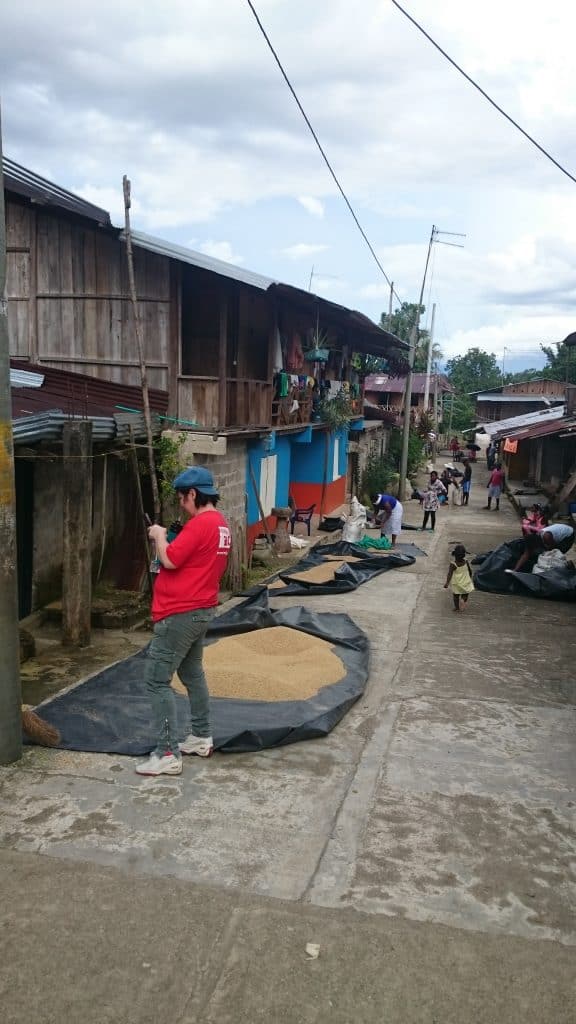On 15 May 2020 there was an armed skirmish between illegal armed groups in the Rio Quito Choco, as one armed groups attempted to, and succeeded in robbing, a floating mining platform (called Entable in Spanish), located in the Cari Pato stream, between the village of San Isidro and La Loma, in the Quito River (Rio Quito). Both groups were heavily armed. The administrator of one of the “dragons” (mining equipment) was shot dead as a result of the crossfire between the two warring groups. This skirmish left one person dead and various others disappeared.

Communities in the Rio Quito are living in fear that this has created a vendetta between the illegal armed groups. They are well aware of what this will mean for them, as these communities are living in the middle of this conflict. For other communities, this kind of violent conflict between warring groups, has forced communities to displace in fear for their lives. Communities in the Rio Quito are in acute danger living in this situation. They are calling on the State to intervene and for the accompaniment of state institutions to ensure the protection of the lives of those living in the communities along the riverbank.
This is the second violent event that occurs less than 15 days and according to the report from the MagazineChoco (RevistaChoco), quoting a local source, it is likely that many more people will be killed, as the confrontation between these two groups was lengthy and fierce. In dialogue with the RevistaChoco magazine, the mayor, Herlin Antonio Mosquera, hinted at his concern and called on the authorities to strengthen security. However, there is a permanent army checkpoint at the entrance to the Rio Quito. Those local to the area are questioning how this incident could happen just half an hour from the check point.
ABColombia took a delegation of members of the UK Parliament and the Irish Dáil to Chocó in 2017, namely, Baroness Jean Coussins, Senator Catherine Noone, and Fiona O’Loughlin TD. ABColombia is also a frequent visitor to the communities along the banks of the Rio Quito. We have noted the permanent army checkpoint at the entrance to the Rio Quito, which is a tributary of the Rio Atrato. The entrance to the Rio Quito is visible from the main town of Quibdó, where the police station sits overlooking the river. It is therefore unsurprising that the communities, and anyone who knows this part of Chocó, questions how incidents like this can happen when all the traffic into the Rio Quito and leaving the Rio Quito must pass this checkpoint. The Rio Quito can only be accessed by the river as there are no roads.
The Rio Quito is one of the rivers most impacted by illegal gold mining, this has generated violence for communities living along its riverbanks, as the floating mining stations are protected by illegal armed groups.
Chocó is one of the top ten biodiversity hotspots in the world, the communities there are impacted by the illegal gold mining, illegal logging and suffer from lack of basic services (water, health, education). The conflict and the lack of basic services has resulted in humanitarian crisis. As a result of the lack of interest by the State in addressing these issues in Chocó, the communities were forced to take the State to the Colombian Constitutional Court. There they won a landmark decision T-622 which gave rights to the river Atrato and its tributaries, as well as, addressing the lack of adequate State Institutions and basic services.
The Court ordered various Ministries including the Ministry of Defence to draw up, in consultation with the Guardians of the Atrato (14 people, two from each community elected by the communities to oversee the implantation of the sentence T-622, created by an order of the Constitutional Court the 15th Guardian being the Minister of Environment0, an action plan to remove these mining platforms from the Atrato and its tributaries (which included the Rio Quito).
This situation poses a major risk for the Afro-Colombian communities living on collectively owned land in the Rio Quito.
Further Reading:
- Colombia River Stories: Letter to Minister Murillo
- A River with Rights: Community Response to Illegal Gold Mining in Chocó, Colombia
- Parliamentary Delegation to Colombia August 2017
- “Guardians of the Atrato River” visit the UK and Ireland
- Increasing concerns about aggravation of humanitarian crisis in Chocó
- Letter to Minister Coveney on Humanitarian Crisis in Chocó and Human Rights Defenders
